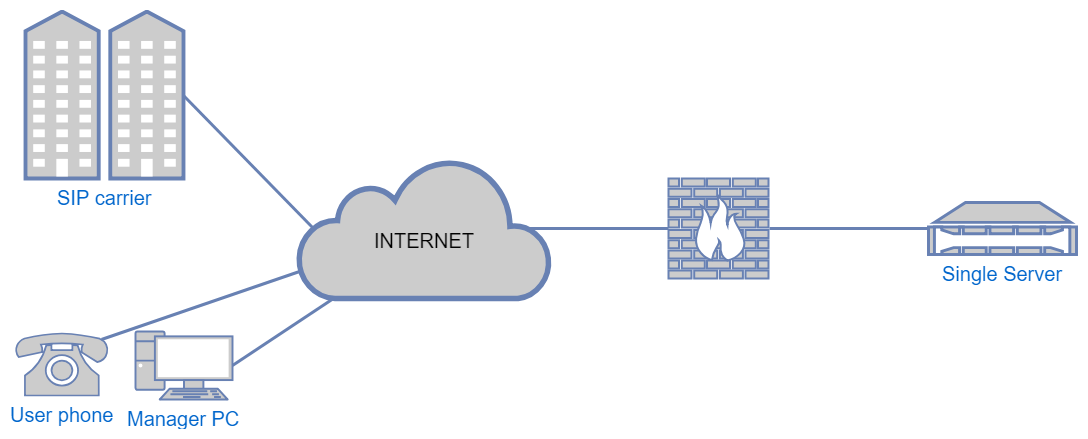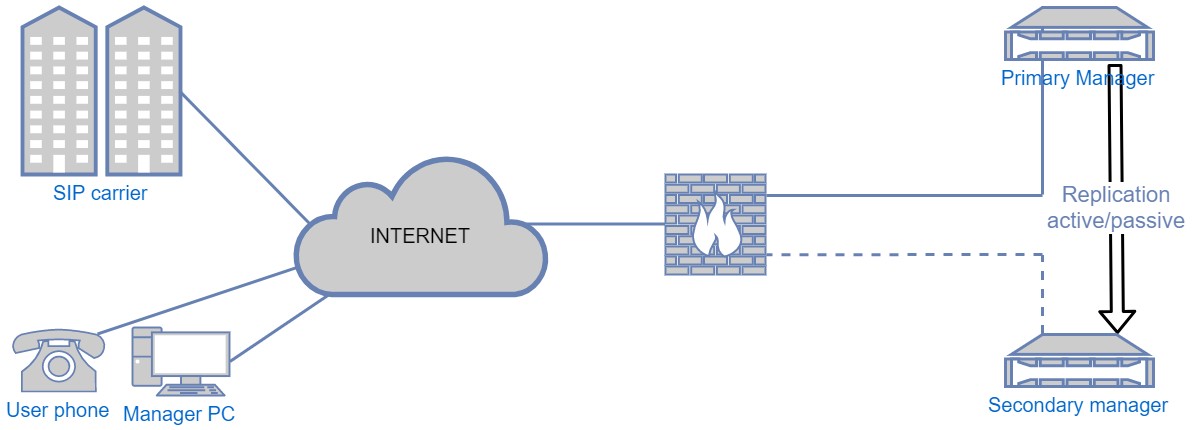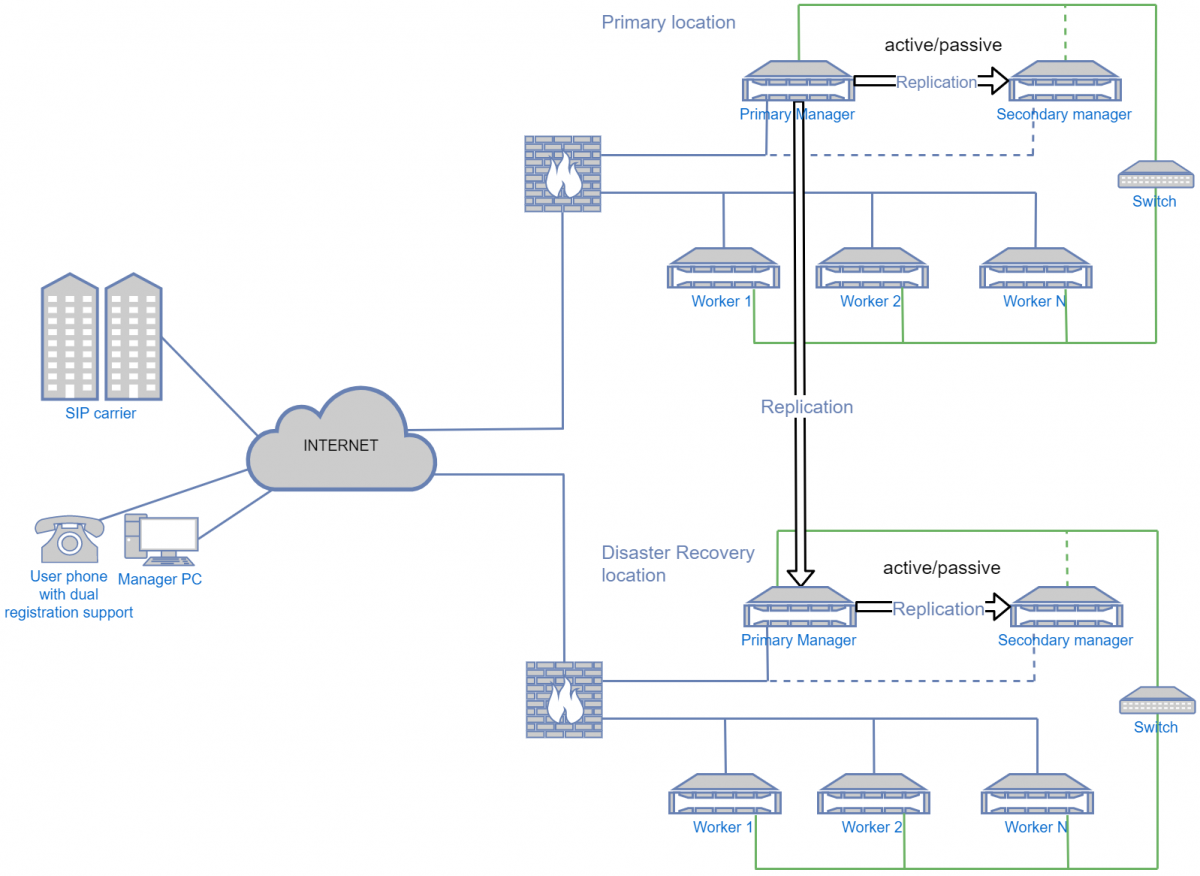We are frequently asked about how reliable and scalable Thirdlane platform is, and what types of companies use Thirdlane platform and applications?
Thirdlane Business PBX has thousands of installations ranging from small companies with a handful of users, to large organizations with thousands of users demanding advanced telephony and state-of-the art Team Communication solution.

Thirdlane Multi Tenant PBX and Thirdlane UC Cluster are typically deployed by small to medium size UCaaS (Unified Communications as a Service) providers, and range in size from a few hundred users to many thousands.
The requirements for system capacity and reliability also vary where some companies may tolerate minimal downtime, while others choose to do everything possible to increase system availability and avoid downtime at all cost.
To satisfy all these requirements, Thirdlane Business PBX, Thirdlane Multi Tenant PBX and Thirdlane UC Cluster can be deployed in a number of different configurations.
Here are some diagrams on how Thirdlane can be deployed on a single or multiple servers. For simplicity we are omitting the applications and services that run on the servers.
Thirdlane on a single server
Single server configuration is common for smaller installations of Thirdlane Business PBX and some installations of Thirdlane Multi Tenant PBX.

Advantages:
- Very easy to setup and maintain
- Can be on bare metal or virtualized
- Can be updated to 2 node HA Cluster if needed
Disadvantages:
- No instantaneous failover
When to use:
Your installation is small, automatic failover is not absolutely required, and you don’t want to immediately invest in redundancy and high availability as you have your own backup and recovery strategy.
Thirdlane redundant HA Cluster
Thirdlane HA Cluster consists of 2 nodes in redundant active / passive configuration with data replication and automatic failover. This is a very common option for both the Thirdlane Multi Tenant PBX and larger installation of Thirdlane Business PBX.

Advantages:
- Easy to setup and maintain
- Easy to update with no down time during update
- Can be on bare metal or virtualized
- Near instantaneous failover in case of server failure
- Can be updated to multi node cluster if needed
Disadvantages:
- Limited by the call processing capacity of one server
- No automatic failover in case of data center failure
When to use:
Your installation is not very large but downtime is unacceptable so you choose redundancy and high availability
Thirdlane high capacity UC Cluster
Thirdlane high capacity UC Cluster brings your Thirdlane installation to the next level of capacity and scalabilty - you are no longer limited by a single server. Thirdlane UC Cluster is typically deployed for installations exceeding a few thousands users and by service providers planning for growth.

With Thirdlane UC Cluster all system management and some communication components run on redundant Manager nodes. These include Thirdlane Manager portal, database server, Kamailio SIP server and optional Asterisk PBX. The Manager nodes work in active/passive mode and thus provide automatic failover in case of the Primary node failure.
Worker nodes run Asterisk PBX servers and do not require redundancy as high capacity SIP servers, running on Manager nodes, routes calls to multiple Worker nodes based on a selected routing strategy. Cluster capacity can be easily increased by adding Worker nodes when needed.
Advantages:
- High capacity with near unlimited growth
- Easy to update with no down time during update
- Easy to add servers for increased capacity
- Near instantaneous failover in case of server failure
- Can be updated to geo-redundant multi node UC Cluster if needed
Disadvantages:
- More complex to setup and maintain
- Higher infrastructure cost
- No automatic failover in case of data center failure
When to use:
Your installation is growing fast and you need redundancy and high availability.
Thirdlane high capacity UC Cluster with geo-redundancy

This is a preferred design for service providers seeking maximum system availability, especially those with customers in multiple geographic locations.
This design adds one or more locations with same or similar size cluster, connected via high speed network.
Advantages:
- Automatic failover in case of data center failure
- High capacity with near unlimited growth
- Easy to update with no down time during update
- Easy to add servers for increased capacity
- Near instantaneous failover in case of server failure
Disadvantages:
- More complex to setup and maintain
- Higher infrastructure cost
- May require manual recovery procedures
When to use:
Your installation is growing fast, you have geographically distributed customers and you want protection against data center failure.
Next steps
From Single Server to High Capacity UC Clusters and even Geographic Redundancy, ThirdLane offers solutions to help you scale your business and deliver the reliability your customers expect.
Contact our Sales team today to get answers to your questions about the right configuration for your ThirdLane deployment.